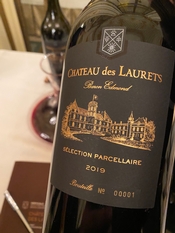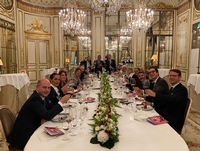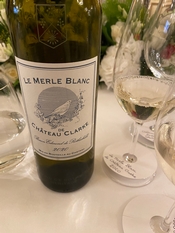Bordeaux is not just about grands crus or other classified wines. The Right Bank in particular counts many affordable “satellite” appellations of Saint-Émilion: from Montagne to Fronsac. Some estates from such appellations craft wines from vines grown on excellent soils like cold clay and limestone, albeit often with cooler microclimates than prime Saint-Émilion locations.
But as global climate change brings warmer weather, these cooler locations yield riper wines and wine fans should take a closer look at some wines from these appellations. Furthermore, while most of the Right Bank – excepting Pomerol – went through a lesser period of excessive alcohol and over extraction of new oak  tannins between 2005 and 2015, this fashion has dissipated (thankfully) in more recent years: yet another reason to take a look.
tannins between 2005 and 2015, this fashion has dissipated (thankfully) in more recent years: yet another reason to take a look.
A microcosm of the positive stylistic change comes from the 40-hectares Edmond de Rothschild estate Château des Laurets, whose origins date back to the 12th century. The vines straddle the Puisseguin Saint‑Émilion and Montagne Saint‑Émilion appellations. Set on hillsides, some grow on deep clay and limestone, which are ideal for Merlot, the leading grape variety in Saint‑Émilion.
After acquiring the estate in 2003, Baron Benjamin de Rothschild decided to produce a limited-edition wine from a selection of the best vine plots, which became known as the Sélection Parcellaire: A 100% Merlot made from vines on 4.5 hectares of the property, averaging 70 years of age and planted at 6,600 vines per hectare. The larger production Château des Laurets comes from vines planted at 5,500 vines per hectare, which blends about 80% Merlot with Cabernet Franc.
While the normal blend from the estate costs about 20 Euros, this special cuvée fetches 50: A steep price, but it can be worth the cost, especially in a great vintage like 2019. Before dinner in Paris, participants tasted through a vertical of the Sélection Parcellaire wines, including the inaugural 2004 vintage through to the 2019, all from magnum bottles.
While the 2004 has mellowed enough to be quite tasty, one could sense the larger scaled style, with less precision and focus, albeit in a rather high yielding and cooler vintage. But the vintage 2019 displays freshness and tannic refinement, as estate winemaker Fabrice Bandiera explained: “We started to pick earlier and have been more careful about extractions.” Other changes have improved the wine, including cool temperature pre-fermenation maceration and cooler  fermentation temperatures, to retain more freshness. It is important to retain that freshness as higher alcohol Merlots aged in 100% new oak – as this wine is – can end up extracting more of the new oak tannin than desired.
fermentation temperatures, to retain more freshness. It is important to retain that freshness as higher alcohol Merlots aged in 100% new oak – as this wine is – can end up extracting more of the new oak tannin than desired.
If ever in Bordeaux, try to visit the estate, and not only to taste the wines: the 1860s Empire style château is gorgeous, from majestic entrance gates to an elegant octagonal central tower.
In addition to the reds, the dinner featured wines from two other Edmond de Rothschild properties: the Rimapere Sauvignon Blanc 2000 and the excellent Le Merle Blanc de Château Clarke 2020 of the eponymous Listrac estate in the Médoc known for its robust reds.
Tasting Notes:
Château des Laurets Sélection Parcellaire 2004: Fruit forward nose with secondary oak tannin derived toast, and some tertiary aspects showing on the palate. The tannins are well integrated, and the wine is drinking well today. The higher yielding and cooler 2004 vintage in the end balanced out the higher extraction winemaking style at the time. 92
Château des Laurets Sélection Parcellaire 2009: At first glance, this is somewhat monolithic, a vintage of higher alcohol and with tannic extraction of the “modern era” so not quite as appealing to me as the 2004, although over dinner – sitting in glass – it improved. I began to better appreciate its density and power. 91
Château des Laurets Sélection Parcellaire 2010: I prefer the 2010 to the 2009, even if the vintage was made in a similar “modern” style. But cooler evenings helped retain more freshness, with a wine that transcends the “modern style” of winemaking. I appreciate the depth and the greater precision to the 2010. 93
Château des Laurets Sélection Parcellaire 2016: Some people were dismayed by what seemed a “lack of sumptuous fruit” or up-front richness, but this vintage denotes a welcome turning point, confirmed by estate winemaker Fabrice Bandiera. Obviously more elegant in terms of winemaking, resulting in a wine with cooler blue fruit. Sure, this is a youngster. Especially from magnum, it needs more time to display its charms. But already more supple on the palate, cooler and a finish with greater lift. 93
Château des Laurets Sélection Parcellaire 2018: The wine seemed simply closed. The vintage aspect dominates, and not as nicely as I thought. Yes, there is density and power, but it seems quite tannic and somewhat monolithic. Give it time. At this stage, I much prefer the 2010 and certainly the 2016. 91
Château des Laurets Sélection Parcellaire 2019: Beautiful! Here we have a wonderful synthesis of opulence in a vintage combined with cooler winemaking. Even better than the 2016, the 2019 is in a joyful, primary stage today, and one can appreciate such charms. My favorite of the vertical. 95
Rimapere Sauvignon Blanc 2020: Crafted from vines located in the Rapaura sector of Marlborough, the Rimapere vineyard benefits from a cool climate ideal to produce Sauvignon Blanc (20 hectares, first vintage 2012). One can  appreciated indeed the varietal freshness, with pleasant acidity and rather typical gooseberry aromas with lemon and grapefruit. 89
appreciated indeed the varietal freshness, with pleasant acidity and rather typical gooseberry aromas with lemon and grapefruit. 89
Le Merle Blanc de Château Clarke 2020: One of an increasing number of dry white wines to be made in the Médoc, the Merle Blanc however has been produced since as early as …1890! Blending mostly Sauvignon Blanc with Semillon, Muscadelle and Sauvignon Gris, the nose is refined and rather complex for such a young white, exuding wet stone as well as quince and citrus with a hint of licorice. I like the textural density on the palate, balanced by vibrant acidity leading to a smooth finish. The wine was aged in 30% in new barrels and clocks in at 6.2g/l of acidity and a pH of 3.18. It outclassed the New Zealand wine, which seemed simpler and more straightforward. Not easy to find, this dry white is a relative bargain, at least for the 2019, which is available in the US for $37 a bottle on wine-searcher last time I checked. 93
Dining with Class
If you want to dine with class in Paris, it is hard to beat Le Meurice. Inspired by the Salon de la Paix at Château de Versailles, the majestic dinner setting had been recently refurbished with Eero Saarinen Tulip chairs, decorative screens and a sculpture capturing the suspended movement of water. Such modern elements blend well with antique mirrors, crystal chandeliers and elegant frescoes, creating a marvelous setting for outstanding cuisine. Indeed, the restaurant mirrors Ducasse’s culinary philosophy under chef des cuisines Amaury Bouhours. Bouhours began his career at Le Louis XV in Monaco, where back in 2015, I enjoyed one of the best lunches ever. He went on to work for Alain Ducasse restaurants around Paris, including Alain Ducasse au Plaza Athénée, before joining Le Meurice as chef de cuisine. Over dinner, each serving proved superb, from the just seared tuna filet slices with coriander, which went so well with the dry white Bordeaux, to an exquisite, perfectly roasted pigeon, which went especially well with the 2004 Château des Laurets Sélection Parcellaire.
I was recently at a three-star Michelin whose cheese course consisted of … one piece of decent enough cheese. Here, the cheese selection was superb, including savory truffle brie whose richness paired well with the somewhat tight 2016 Château des Laurets Sélection Parcellaire. The dinner ended with an exceptional “Cabosse” by executive pastry chef Cédric Grolet, who won the title “World’s Best Restaurant Pastry Chef” in 2018. Indeed, the hotel opened its own pastry shop called La Pâtisserie du Meurice directly by Grolet. This crispy chocolate praline confection, whose outer coco shell encased Ganache chocolate custard with hazelnuts and fleur de sel imparted the most vivid and pure chocolate flavors I can recall ever enjoying.
About the Hotel
Room prices start at about $900 a night, but they are gorgeous. Le Meurice is one of the oldest hotels in France along the Rue de Rivoli. Property developer François Corbie acquired a stretch of arcades to build what would become Le Meurice, which faces the Tuileries Garden. The hotel, which opened in 1835, and named after original owner Charles-Augustin Meurice, often is referred to as the “Hotel des Rois” (Hotel of Kings), due to many royal guests. In 1855, Queen Victoria stayed there during an official state visit to Paris. In 1889, Le Meurice became the first hotel in Paris to have a telephone. Over a century later, in 2007, it was one of the first hotels to work with designer Philippe Starck, whose sumptuous interior design was inspired by the creativity and playfulness of artist Salvador Dali, who made the hotel a second home.
